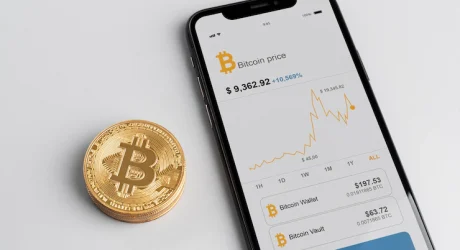Foreign exchange, or Forex, is regularly regarded as the world’s most liquid monetary market. It gives traders publicity to several overseas currencies, permitting them to earn from fee adjustments in the overseas change market. Since liquidity is indispensable to the success and value of any trade, it goes without saying that liquidity and Forex buying and selling go hand in hand. But what does this mean, exactly, and why does it matter so much?
Liquidity: What Is It?
The capacity to accumulate and promote an asset swiftly and smoothly without appreciably impacting its fee is what is intended by the phrase “liquidity.”
This notion is mainly vital in the economic sector, as buyers and merchants should be in a position to cross their cash barring incurring a massive loss shortly.
Liquidity can additionally be described as the ease with which an asset can be transformed into cash. Since it can rapidly and without difficulty be used to purchase items and services, money is broadly considered the most liquid asset.
Liquid belongings can be short and, without problems, transformed into cash. They can be spent, invested, or transferred right away at an identical price, unlike, for instance, actual property or vehicles. Liquid belongings are regarded as secure bets due to their low volatility and excellent stability.
The liquidity and adaptability they convey to a company’s price range make liquid belongings exceptionally suited holdings to have on hand. Agencies and people have liquid belongings on hand to get entry to dollars rapidly for things like making repayments or coping with unexpected occurrences. Furthermore, in instances of economic despair or instability, having to get admission to liquid money offers a protection net.
There is a desire to be a center floor between investing in belongings with the possibility for greater yields and investing in property with the conceivable for longer-term growth. While it is authentic that having liquid belongings can put your idea at ease, that does not suggest they may earn you a great deal or even hold tempo with inflation. For this reason, it is advocated that corporations and humans reflect on diversifying their investments.
Liquid belongings encompass foreign money in hand, dollars in a cash market account, and non-permanent authorities bonds.
Excessive Liquidity
Liquidity is the capacity to purchase and promote belongings quickly through investors. When you have liquid assets, you may additionally unexpectedly convert them into money to pay for surprising charges or take gain from investing opportunities.
Cash Waft Problems
However, buyers may also want extra time to cost low-liquidity belongings like actual property or personal equity. Therefore, buyers should mix the requirement for excessive liquidity with a focal point on the lengthy time period while creating a portfolio.
Foreign money is much less liquid when demand is low. This statistic suggests that this currency’s trade fee is hardly ever modified. When dealing with these currencies, the distinction between the bid and the asking rate is regularly huge. It may want to take a week or extra earlier than you see any bids come in if your currency is not in robust demand on the market owing to inflationary or political threat worries.
The Danger Of Running Out Of Money
Like any monetary market, Forex is fraught with peril and severe volatility. It is the biggest and most liquid market in the world due to the buying and selling of currencies between international locations on a decentralized market open 24 hours a day, five days a week.
One purpose for the excessive change and volatility of overseas change buying and selling is the steady fluctuation in the relative costs of specific currencies. This potential that reputedly minor shifts in foreign money change fees can profoundly impact a trader’s earnings or losses.
The absence of market regulation exacerbates the excessive danger and volatility of overseas alternate buying and selling. Since the alternate overseas market is much less regulated than the inventory market, its merchants are more inclined to fraud and exploitation through unscrupulous brokers.
The Importance Of Liquidity In Forex Trading
Looking for spots where many orders are being made and crammed is the focal point of “liquidity sector trading,” a buying and selling strategy. High transaction volumes and charge volatility on a foreign exchange chart propose lively buying and selling in these “liquidity zones.” Traders might also have more tremendous success recognizing promising possibilities in “liquidity zones.”
By highlighting the areas of the rate chart where most shoppers and dealers are active, liquidity area buying and selling gives buyers treasured records into market sentiment. Traders can use these records to enhance their danger administration and exchange execution.
Liquidity zones on a forex chart can be recognized with technical warning signs like shifting averages, Bollinger Bands, and extent indicators. High-volume buying and selling areas, such as consolidation or breakout points, can be recognized through charge motion analysis.
Remember that buying and selling in a liquidity zone, like any different type of forex trading, has with it an inherent diploma of risk. Traders must not push aside chance administration systems like stop-loss orders and function sizing.
Conclusion
Increased liquidity in the overseas change market enables tighter bid-ask spreads, quicker order execution, and decreased slippage. A market’s liquidity has an important influence on its charge volatility. Low liquidity amplifies market volatility and rate swings, whereas excessive liquidity limits volatility and minimizes fee swings.
Additionals:




























